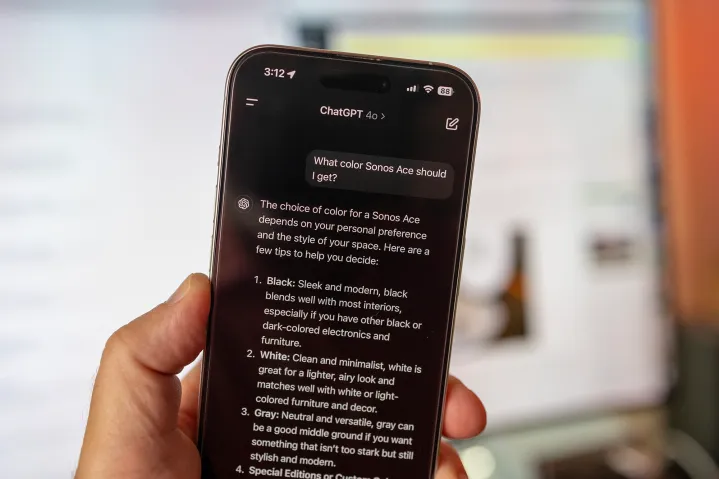With the rise of AI assistants, developers and creatives alike are flocking to language generation tools. Two of the most popular platforms today dominate the space: OpenAI’s ChatGPT and Microsoft’s Copilot. Both run on GPT-4, but which is best for you?
We review their pricing models, performance benchmarks, and unique strengths to help you decide which AI companion best fits your needs.
Pricing and tiers

Both ChatGPT and Copilot are freely available to all users, though at that tier, they are rather limited in their capabilities. For example, ChatGPT users won’t have access to the Dall-E image generator or be able to create their own GPT mini-applications. Copilot on the other hand is limited in the total chats per day users can have (300), the number of turns per chat (30), and number of document uploads per day, as well as the upload file size.
Microsoft and OpenAI have essentially identical monthly subscription offers for individual users. Both ChatGPT Plus and Copilot Pro will run $20/month (with the first month free) and give subscribers greater access to the GPT-4o model as well as new features.
For small businesses, both companies offer Team subscriptions. OpenAI charges $25-$30/month per user for ChatGPT-Plus Teams, depending on whether you pay monthly or annually, while Team Copilot will set you back a flat $30/month per user. For larger businesses, OpenAI and Microsoft each offer Enterprise accounts, though you’ll have to contact them directly for a price quote.
Advantages of using Copilot
The biggest advantage at the free tier is that Copilot will actually generate images for you. With ChatGPT, users don’t have access to the Dall-E system at the free tier, which only unlocks when you subscribe to Plus.
At the Pro level, Copilot holds the strong advantage of being able to integrate into Microsoft’s 365 software suite. This enables it to work directly with Word, Excel, PowerPoint, Outlook, and OneNote to streamline workflows and provide real-time analysis of documents and correspondence. This is very similar to what Google’s Gemini Advanced plan does with Workspace and something that ChatGPT Plus currently does not.
Advantages of using ChatGPT
What ChatGPT lacks in ability to integrate into a specific product ecosystem, it makes up for in general versatility. Copilot Pro is designed with professional and Enterprise tasks in mind, so you’ll find that ChatGPT works better as a general assistant able to speak on a broader range of topics, especially those that don’t involve coding. ChatGPT also speaks a far greater number of languages than Copilot — 80 versus 28, respectively.
While you’ll have to pay extra for image generation, OpenAI’s service offers access to a host of purpose-built GPT applications through its GPT Marketplace for users to try out. GPT’s are the ChatGPT equivalent of apps, small programs that perform specific tasks, like Planty, which doles out gardening advice, or Scholar GPT, which gives users access to hundreds of millions of research papers from Google Scholar, ArchivX, and others.
Microsoft briefly offered its Copilot Pro users the ability to build their own GPTs, as ChatGPT Plus users are able; however, Microsoft culled the feature on July 10, 2024, just four months after its debut.
Speed and accuracy comparison
In terms of speed, both services are evenly matched, largely due to the fact that they’re running the same underlying GPT-4 model. For example, when posed with the prompt “A box contains 25 blue marbles, 6 yellow marbles, and 11 red marbles, what is the probability of randomly selecting a red marble?” both correctly calculated 11/42, though Copilot went a step further and converted that into an easy-to-understand percentage.
That’s because Copilot has been fine-tuned and tweaked by Microsoft to better fit its own purposes.

Their responses differed even further when asked about philosophy and whether reality is an illusion. Copilot returned a disjointed list of examples of brain behaviors that help “fill in” our personal understandings of reality, including visual illusions, blind spots, memory gaps and imagination versus reality. ChatGPT, on the other hand, began explaining the perspectives that various schools of thought had on the subject, from the spiritual and philosophical to the scientific and psychological.
When asked to generate a python snippet to count the number of words in a given document, they again took different approaches to the problem. ChatGPT designed a script that included error handling while Copilot first cleaned the text of punctuation and numbers, though both solutions were ultimately built around the same “len(words)” command, Python’s built-in string length measurement tool.
Which is better?
Neither? Both? It depends on what you want the AI to help you with. If you want an AI to pepper with the weird questions that pop into your head while showering (no? just me?), provide advice on specific subjects, summarize uploaded documents, and analyze images, try ChatGPT first.
If you’re conversely looking for an AI to help improve your coding or slide seamlessly into your existing Microsoft 365 suite, give Copilot a shot. Then switch and try the other. They’re both free — what do you have to lose?




